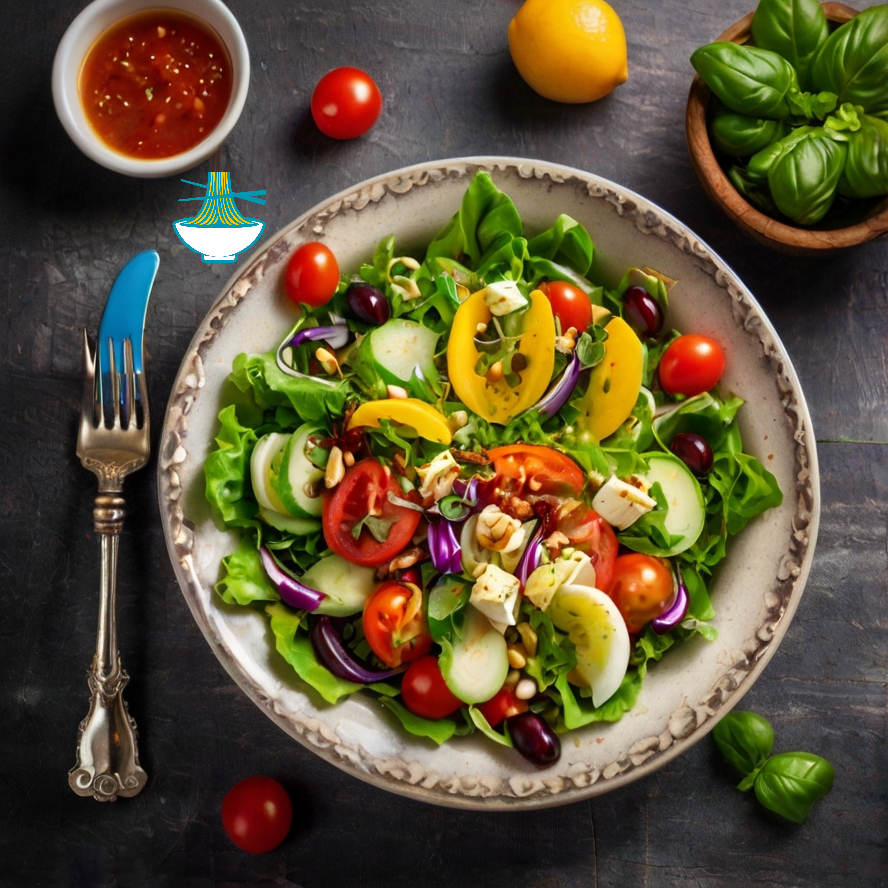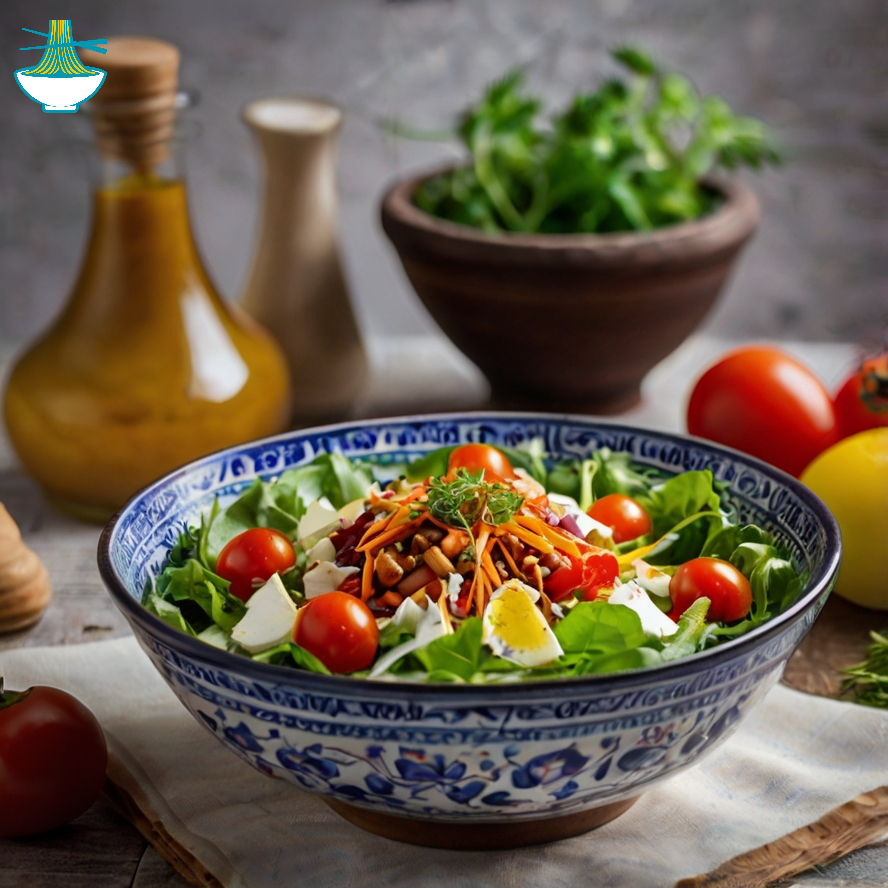Dive into the fresh flavors of Jordan with this vibrant Jordanian Salad. Crisp lettuce, juicy tomatoes, crunchy cucumbers, and zesty onions are delicately tossed with fragrant herbs, then drizzled with the golden essence of olive oil and the tangy brightness of lemon juice. Experience a burst of Middle Eastern flavors in every refreshing bite, transporting your taste buds to the sun-drenched landscapes of Jordan. Perfect as a light appetizer or a wholesome side dish, this salad is a celebration of simplicity and tradition, capturing the essence of Jordanian cuisine with every forkful.
Ingredients:
- 1 head of lettuce, washed and torn into bite-sized pieces
- 2 large tomatoes, diced
- 1 cucumber, diced
- 1 small red onion, thinly sliced
- Handful of fresh herbs (such as parsley, mint, or cilantro), chopped
- 3 tablespoons extra virgin olive oil
- Juice of 1-2 lemons, to taste
- Salt and freshly ground black pepper, to taste
Instructions:
1- In a large salad bowl, combine the torn lettuce, diced tomatoes, diced cucumber, sliced red onion, and chopped fresh herbs.
2- In a small bowl, whisk together the extra virgin olive oil and lemon juice until well combined. Season with salt and freshly ground black pepper, to taste.
3- Drizzle the dressing over the salad ingredients in the salad bowl.
4- Gently toss the salad until all the ingredients are evenly coated with the dressing.
5- Taste and adjust the seasoning, if necessary, adding more salt, pepper, or lemon juice according to your preference.
6- Once seasoned to your liking, serve the Jordanian Salad immediately as a refreshing side dish or as a light appetizer.
7- Enjoy the burst of flavors and textures from the fresh vegetables, herbs, and zesty dressing!
This salad is best served fresh, so try to consume it shortly after preparing for the optimal taste and texture. Adjust the quantities of ingredients according to your preferences and the number of servings needed.
Nutritional Values :
Here's the nutritional breakdown and benefits for the ingredients in your salad:
Lettuce (1 head):
- Calories: Approximately 15
- Fat: 0 grams
- Carbohydrates: 3 grams
- Protein: 1 gram
Benefits:Low in calories and high in water content. Provides fiber and vitamins A and K. Supports hydration and overall health.
Tomatoes (2 large, diced):
- Calories: Approximately 44
- Fat: 0.4 grams
- Carbohydrates: 10 grams
- Protein: 2 grams
Benefits: Rich in vitamins A and C, and antioxidants like lycopene. Supports heart health, skin health, and provides hydration.
Cucumber (1, diced):
- Calories: Approximately 16
- Fat: 0 grams
- Carbohydrates: 4 grams
- Protein: 1 gram
Benefits: Low in calories and high in water content. Provides vitamins K and C, and supports hydration and digestion.
Red Onion (1 small, thinly sliced):
- Calories: Approximately 45
- Fat: 0 grams
- Carbohydrates: 11 grams
- Protein: 1 gram
Benefits: Contains antioxidants and compounds that support heart health and reduce inflammation.
Fresh Herbs (handful, such as parsley, mint, or cilantro):
- Calories: Approximately 5 (for 1/4 cup)
- Fat: 0 grams
- Carbohydrates: 1 gram
- Protein: 0.5 grams
Benefits: Provides vitamins A, C, and K, and offers antioxidants. Adds flavor and freshness to the salad.
Extra Virgin Olive Oil (3 tablespoons):
- Calories: Approximately 360
- Fat: 40 grams
- Carbohydrates: 0 grams
- Protein: 0 grams
Benefits: Rich in monounsaturated fats and antioxidants. Supports heart health and adds richness to the salad.
Lemon Juice (Juice of 1-2 lemons):
- Calories: Approximately 12 (for 2 tablespoons)
- Fat: 0 grams
- Carbohydrates: 3 grams
- Protein: 0 grams
Benefits: High in vitamin C, supports immune health, and adds tangy flavor to the salad.
Salt and Black Pepper (to taste):
- Calories: 0
- Fat: 0 grams
- Carbohydrates: 0 grams
- Protein: 0 grams
Benefits: Enhances flavor. Salt helps maintain fluid balance, while pepper adds additional flavor and may have antioxidant properties.
Please note that these values are approximate and can vary based on factors such as the specific type and size of ingredients used and any variations in preparation methods.


Comments